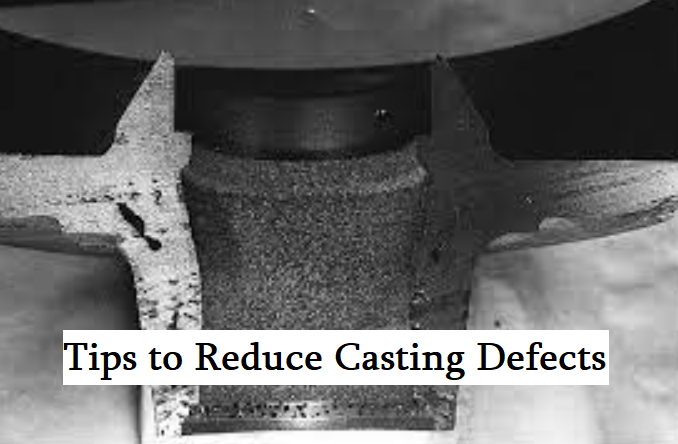In the production of casting parts, the manufacturer will encounter casting defects such as shrinkage cavity, bubble, etc., which lead to low yield of castings. How to reduce casting defects?

10 Effective Tips & Guidelines to Reduce Casting Defects
1. Casting melting
Before beginning the casting process, prepare, check, and manage the melting process. Acceptable minimum standards can be adopted if necessary. A better option is to plan and implement a melting scheme with minimal defects.
2. Prevent turbulent inclusion on the free surface.
It is necessary to avoid a high free surface flow rate (meniscus) at the front end. The maximum flow rate for most metals is set at 0.5m/s. The maximum flow rate will be increased appropriately for closed gating systems or thin-walled parts. This requirement also implies that the metal liquid’s falling height cannot exceed the critical value of the static drop height.
3. A surface condensation shell should not be included laminarly in liquid metal.
This mandates that the front end of any metal liquid flow should not stop flowing in advance during the full filling procedure. The early filling stage meniscus of molten metal must be preserved in a flexible state, unaffected by the thickening of the surface condensation shell that will eventually become a part of the casting. The front end of the liquid metal can be constructed to constantly expand to provide this effect. In actuality, only an uphill bottom injection can provide a rising process that is continuous. bottom pouring technique; Avoid allowing the metal liquid to slide or sink down a slope, maintain a small area of horizontal flow, and do not stop the front flow of metal liquid.
4. Avoid air entrapment
Avoid the air bubbles generated by the gas entrapment of the gating system entering the casting mold cavity. It can be achieved through the following ways: reasonable design of stepped gate cup, reasonable design of sprue, rapid filling, reasonable use of dam, avoiding the use of well type or other open gating system, using small cross-section runner or ceramic filter near the connection of sprue and runner, using degassing device, and uninterrupted pouring process.
5. Avoid sand core porosity
Prevent sand core or sand mold air bubbles from entering the cavity metal liquid. To stop the sand core from creating air holes, the gas content of the sand must be extremely low, or adequate air exhaust must be used. It is forbidden to use clay-based sand core or mold repair glue unless it can guarantee complete drying.
6. Avoid shrinkage cavity
Due to the influence of convection and unstable pressure gradient, the castings with thick and large sections cannot be fed upward. Therefore, it is necessary to follow all feeding laws to ensure a good feeding design, and use computer simulation technology to verify and actually pour samples. Control the flash level at the connection between sand mold and sand core, control the thickness of mold coating, and control the alloy and mold temperature.
7. Avoid convection
The castings with thick and broad sections cannot be fed upward due to the effect of convection and an unstable pressure gradient. Therefore, to achieve a successful feeding design, it is essential to adhere to all feeding laws. Computer simulation technologies should also be used to check and really pour samples. Control the thickness of the mold coating, the temperature of the alloy, and the level of flash at the joint between the sand mold and the sand core.
8. Reduce segregation
Within the standard range, or the composition overflow area permitted by the client, segregation must be avoided and regulated. Avoid channel segregation if at all possible.
9. Reduce residual stress
After solution treatment, water cannot be used to quench light alloys (cold water or hot water). Polymer quenching medium or forced air quenching can be utilized if the casting stress appears to be minimal.
10. Datum point
For dimensional inspection and processing, positional reference points must be provided for all castings.

